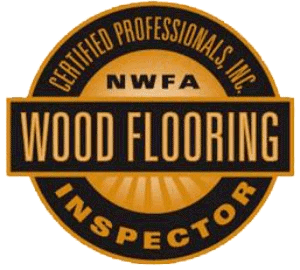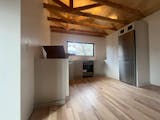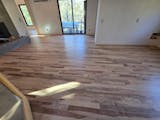Defective or Not Defective?
Woodwudy Wholesale Flooring is committed to educating our customers and set the proper expectations so our buyers will have the best experience.
One of the worst things that can happen to a customer is to discover that the product they ordered isn’t what they received. All the energy and time spent doing research while the actual amount spend on the purchase would rightly upset anyone. We would like to clarify some common issues as to if the product is defective or not so that customers can be better informed about the purchase they made and if they are controllable, avoidable or simply manufacturer error.
Hardwood doesn’t match from one carton to the next, is this a defect?
- Although a tough question as every person’s view of beauty or if something matches is different so the easiest way to answer this is that wood has natural variations that change from board to board. Should you want something with less variations then they should consider buying a stained product or a higher-grade material that has less of the natural characteristics. Installers should pull boards from 3 to 5 cartons to help scatter out the very unique pieces in a manner that accentuated the floor.
Brand new floor already has scratches, are those defects?
- No, this should be expected in hardwood flooring and scratches will build up over time which will decrease the luster and initial beauty of the floor. Homeowners can take measures to reduce the amount of scratches that end up on their floors such as performing regular maintenance to prevent dirt from scratching the floor, clipping pet’s nails or keeping them off the new floors, taking shoes off at the door, or by placing floor protectors under the legs of your furniture. For solid hardwood, these floors can be refinished so when homeowners cannot stand seeing the scratches than they can get them taken care of by a professional flooring company.
Floor make a squeaking sound when walked on, is this a defect?
- This is not a defect as this is connected to subfloor conditions and can simply be fixed by testing for squeaks prior to installation and placing nails or screws in the affected areas.
Finish is flaking off, is this a defect?
- While there are not many reasons as to why this would happen, the odds are very likely that it is a product integrity issue. Another possibility is that it is due to environmental conditions such as relative humidity levels or large spills that have caused the finish to flake. Should this issue happen due to another origin besides the product than the problem is probably a defect.
Brand new hardwood floor has dents in it, are those defects?
- No, they are not as every floor and plank in that floor is different and hardwood is a natural product. Even though wood is resilient and strong, enough force on the surface of the wood will show those effects. The denser the wood, the harder it will be to dent and even though concrete is very resistant to denting, it is not desirable to look at or add value in beauty to the room. There are positives and negatives and it is up to the customer to decide if they want a beautiful floor that is less dent resistant or something harder that isn’t as beautiful.
Floor has gaps, is this a defect?
- This is not a defect as wood naturally expand and contracts and is most likely to happen and become noticeable during the hot and cold months. If gaps are noticed immediately after installation than it could indicate that is flooring was insufficiently locked together or the acclimation time given by the manufacturer was not long enough. A simple resolution would be to use putty or wood filler to minimize the appearance of gaps.
Floor is popping when walked on, is this a defect?
- This is not a defect and could possible be an uneven subfloor or the installer improperly glued the subfloor or frequent use of nails/staples or the possibility of elevated moisture. The installer can fix the issue with the glue on site, elevated moisture can be resolved by a humidifier or dehumidifier which could roughly restore relative humidity in 2 to 8 months depending on the moisture level, and for frequent use of nails/staples would need to be fixed by removing and reinstalling the boards.
Floor has “peaks”, where it is being pushed off the floor, is this a defect?
- This is not a defect as wood naturally expand and contracts and is most likely to happen and become noticeable during the hot and cold months. Should peaking become noticeable a day or so after installation than the wood was not allowed to acclimate for the allotted time set by the manufacturer or due to improper installation methods. Another possible reason for this would be environmentally related should the wood have been exposed to water for a prolonged period or relative humidity levels were too high. This can be fixed by allowing more expansion and contraction room or by simply replacing the board that is affected or regulate the humidity level. Patience is required if it is a moisture issue as once the issue is resolved than the wood will release the excess moisture and get closer to its original appearance.
Floor sounds hollow when walked on, is this a defect?
- This is not a defect and most likely means that your floors were installed with the floating method and the underlayment wasn’t upgraded for better sound absorption. You should do research on floating floors and listen to how it sounds when walked on to guarantee that you are satisfied with the floor.
Homeowners will notice that there are very few product concerns that are listed as defective and that is due to many of the concerns starting with setting the expectations for the product they are purchasing and how it will perform. By setting these expectations than it can help them avoid many of these concerns. Hiring experts in installation to install the floors gives homeowners comfort in the knowledge that if a mistake has been made that they will stand behind their warranty and resolve any issues. Most warranties only cover any issues with structural integrity which means that the issues are noticeable on the product line and never get packaged. Below is a short list of items that homeowner should watch for and bring a flooring dealers attention.
Raised grain/ridges- replace plank and should it occur after installation than it could be caused by an existing environmental condition.
Dimensions described do not match product- should the length, width, height or wear layer not meet the standards that are indicated by the manufacturer that you should not install these pieces and replace the necessary planks till the job has been completed.
Cracks or splits in product- due to industry standards, this issue should very rarely occur, but should this happen to more than 5% of the product than you should expect product replacement unless the material is cabin grade or acknowledged as factory seconds. A resolution to this issue is to not install unfit planks which it is rare that a plank is unfit enough to be deemed completely unworkable during installation and should anything occur after installation than it could be caused by an existing environmental condition.
Non-Square Edges- could cause a gap appearance and according to NOFMA, the Wood Flooring Manufacturers Association, standards state that a gap should not be more than 1/32nd of an inch. Homeowners could fix this issue by using a filler or plank replacement. Should finish or stain not cover the plank edges than a seam filler or additional stain or finish should be used to fix this issue.
A crack too thin to allow a dime to fit inside- even though it is rare, a resolution to this issue is to replace the plank and should it occur after installation than it could be caused by an existing environmental condition.
High Moisture content on receiving materials- majority of wood materials are required to be delivered at a 6-8% humidity level so if it is 3-5% below or above that percentage than it can impact the stability of the floor and to resolve this issue is to wait on installation, so the wood has time to acclimate or replace the product should the moisture levels continue.
Overwood (edge seams are uneven with one higher than another)- if the planks are more than 1/16th of an inch in height difference on the edge seams per the standards set by NOFMA than product or plank replacement will resolve the issue.
Delamination, wear layer separating from core- this prevents the flooring from properly functioning and typically happens after installation. Should it not be a moisture related issue than plank replacement should be completed and if it is moisture related than the excess moisture must be addressed prior to attempting a resolution.
Tongue and Groove do not fit- this prevents installation so to fix this issue, discard 5% per NOFMA standards and if it should be any higher than product replacement should be considered or a potential work around for areas with necessary cuts will occur.


































